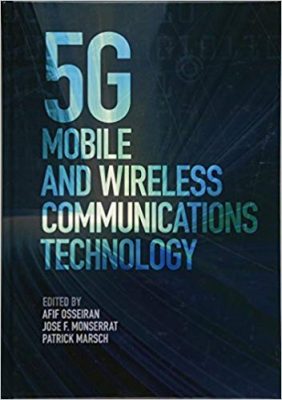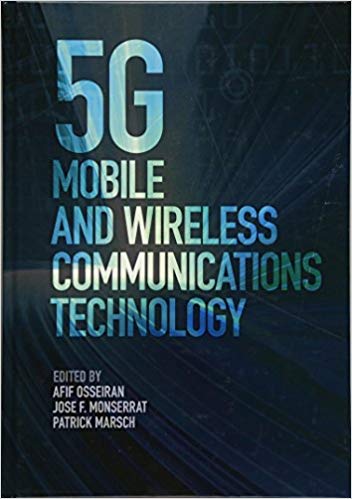 Editors: Afif Osseiran, Jose F. Monserrat, and Patrick Marsch
Editors: Afif Osseiran, Jose F. Monserrat, and Patrick Marsch
Publisher: Cambridge University Press – 406 pages
Book Review by: Sonu Chandiram
In this book published (probably early) in 2016, the Foreword writers Mischa Dohler and Takehiro Nakamura state that information communications technology (ICT) has settled into the fourth round or 4G because of the success of 2G and 3G, and “are leading to the consensus on the fifth-generation (5G) mobile systems. These successes started off as a movement of telephony to the mobile environment, and have, by 2015, already brought the Internet into the end user’s hand.”
Professor Dohler, head telecom research at King’s College London, and Mr. Nakamura, managing director of the 5G laboratory at NTT Dokomo, were exultant bout 5G, writing: “this new generation of mobile systems feels different,” with “the global scale of enthusiasm and motivation is different,” and that “even the marketing has not been shy in proclaiming the advent of 5G on the roadmap.”
They briefly highly the evolution of mobile technologies this way:
- 2G was about global voice
- 3G was about voice and data
- 4G was about voice, data, and applications
And then ask us: “What about 5G?” They point out that mobile communication systems like cell phones have, over time, have changed people’s lives dramatically in at least three ways:
- Becoming an essential component of social interaction
- Mobilizing our daily lives
- Facilitating our economy through e-commerce
This book is important both to those who are tech proficient as well as to those who barely understand how cell phones work and the different levels or generations Gs) of mobile technology. If you are tech proficient, this book will enable you to understand the social impact of mobile technology, and if you are not, this is the book to buy and keep and read to gradually understand the different levels of technology and their respective capabilities and features.
Sixty people contributed content for the 14 chapters of this unique book that we name below.
- Introduction
- 5G use cases and system concept
- The 5G architecture
- Machine-type communications
- Device-to-device (D2D) communications
- Millimeter wave communications
- The 5G radio access technologies
- Massive multiple-input multiple-output (MIMO) systems
- Coordinated multi-point transmission in 5G
- Relaying and wireless network coding
- Interference management, mobility management, and dynamic reconfiguration
- Spectrum
- The 5G wireless Propagation channel models
- Simulation methodology
This compact book is an essential and excellent source of material on 5G and its promise of a future hyper-connected world. It provides a solid knowledge base on this technology. It is a must-read for anyone living in the modern world who owns a cell phone.
Editors:
Afif Osseiran is Director of Communications at the Ericcson Chief Technology Officer (CTO) department. He previously managed the EU 5G flagship project METIS, and was Technical Manager of the Eureka Celtic project WINNER +. He has co-edited two books on IMT-Advanced aka (4G)and is a senior member of the IEEE.
Jose F. Monserrat is an associate professor in the Communications Department of the Universitat Politecnica Valencia. He is a senior member of the IEEE and has been involved in several European projects, including NEWCOM, PROSIMOS, WINNER+, METIS, and METIS II.
Patrick Marsch is a manager at Nokia Bell Labs, where he leads a wireless system research department and is the Technical Manager of the 5G-PPP project METIS-II. He was the Technical Project Coordinator of the project EASY-C, where the world’s largest research test beds for LTE-Advanced were established. He is co-editor of Coordinated Multi-Point Mobile Communications (Cambridge, 2011).







